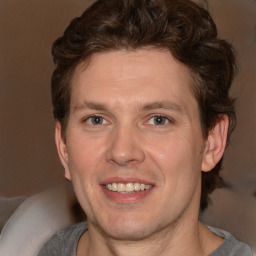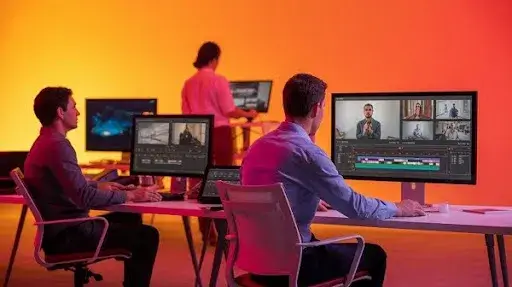Reflect on the most recent time a film or animation completely engrossed you. Maybe your heart raced in the midst of a car chase, or your stomach sank at a crucial moment. The visuals mattered, but it was the sound that truly made an impact.
Sound is the one thing a person can absentmindedly ignore. It is there to dominate, control, and localize the emotion. It fills the void and does what the visuals can’t. In films, games, and even short ads, sound tells you what to feel.
That’s where diegetic and non-diegetic sounds come in. These two decide if you’re hearing what the characters hear, or something just meant for you.
Why Sound Matters So Much
Close your eyes for a sec. Imagine hearing footsteps echo down an empty hallway. Or a bit of background chatter in a coffee shop. You can probably see the scene already, right?
That’s not random. Sound designers build that experience on purpose. They use little audio cues to place you in the story without you even realizing it.
It’s part of the reason why Prolific Studio, which does 3D animation, understands that sound becomes an integral part of the story. Good sound mixing involves more than occupying silence; it involves mood crafting.
Diegetic Sound: The Sound Inside the Story
Diegetic sound is basically any sound that exists inside the story world. The characters hear it, and so do we.
Dialogue, footsteps, rain, a door slam, a song on a radio, all of that counts as diegetic. It comes from something that makes sense inside the story’s world. That’s why it’s often called “source sound.”
Why It’s Important
Without diegetic sound, everything would feel… off.
Picture a restaurant scene with no clinking glasses or people talking in the background. Weird, right? It’s the natural noises that make scenes believable and full of life.
Sound designers make sounds by recording or constructing them, then blending and layering them. It involves more than sound; it is about making a world.
A Few Simple Examples
Here are some quick ones you’ll recognize right away:
- A TV turned on in the background while someone cooks dinner.
- Rain hitting the windows during a quiet night.
- Traffic humming outside an apartment.
- A character singing along to a song in their car.
All of these exist in the same world as the characters. They hear it, and we hear it too.
In animation, especially 3D work, sound artists often have to make every one of these from scratch. Even a single footstep or fabric rustle can change the whole feel of a scene.
Non-Diegetic Sound: The Sound Outside the Story
Now let’s flip it. Non-diegetic sound is what we hear, but the characters don’t.
It consists of elements included solely for the viewers, such as background music, intense sound effects, or a narrator’s voice.
That soft piano playing in a sad scene? Non-diegetic. The booming bass when a chase begins? Also non-diegetic. It’s not happening in the story, but it’s there to guide your emotions.
What It Does
Non-diegetic sound tells you how to feel. It builds tension before a jump scare, lifts a scene during a victory, or adds weight to a moment without changing anything on screen.
Prolific Studio, for example, uses sound in explainers and brand videos to build emotional resonance. The music, even when subdued, amplifies the tone and keeps people emotionally involved.
Quick Examples
You’ve definitely heard these before:
- A narrator talking over a flashback.
- A suspenseful score slowly rising before a reveal.
- That whoosh sound between trailer cuts.
- A loud sting when something shocking happens.
These sounds aren’t part of the world; they’re added just for you, the viewer.
The Real Difference
In short:
- Diegetic sound is what the characters and the audience hear.
- Non-diegetic sound is what only the audience hears.
One creates the sense of reality, while the other influences your response to it. When executed properly, they merge so seamlessly that it becomes unnoticeable.
Mixing the Two
The best directors and sound editors often mix both.
Visualize this: a character dons headphones, and we hear their playlist (which is diegetic). The music gradually increases in volume and accompanies a montage (that is, non-diegetic). That seamless transition emotionally links us to the events.
It’s called trans-diegetic sound, and it’s one of those little storytelling tricks that keep scenes flowing.
When it’s seamless, you stop thinking about sound completely; you just feel the story.
Layering Diegetic Sounds
Realistic scenes often have multiple diegetic sounds happening at once.
A bustling city could feature honking vehicles, footsteps, conversations, birds, and perhaps a faint siren in the distance. United, they bring a vibrant energy to the world. Take them out, and it feels empty.
Even silence counts as sound; it can make you feel tension or loneliness depending on how it’s used.
Every small sound, a click, a creak, a soft echo, adds personality to the scene.
Diegetic Background Music
Yep, even background music can be diegetic.
Think of a band performing in a restaurant, or a DJ spinning at a party, or a character listening to music in their car. The characters are hearing that music too.
Directors employ it to shift emotions smoothly without interrupting the flow of the story. For sound designers, it’s among the most intuitive approaches to preserve a feeling of genuineness and realism.
The Blend of Diegetic and Non-Diegetic Sound
This is when it gets interesting: when the two types of sound work together. That combination can elevate an ordinary moment into something that genuinely lingers in your memory.
Directors frequently start with diegetic sounds, like footsteps, the hum of a fridge, or maybe the creaking of a door. Subsequently, they incorporate non-diegetic music or sound effects to elicit an emotional response from the audience. You might not be fully aware of it, but you feel it.
Imagine this: a character hears a melancholy tune on their device. The camera gradually pulls back, and that identical melody merges with the background music. All at once, it’s no longer solely their music; it’s our emotion as well.
Sound designers excel at achieving that smooth transition. Its story is communicated via rhythm and texture, rather than solely through conversation. Studios like Prolific Studio, recognized for their significant 3D animation offerings, utilize this approach to deepen the emotional resonance of scenes.
How Filmmakers Use Sound to Tell a Story
Good directors don’t just use sound; they play with it.
They’ll cut the background track mid-scene so silence lands like a punch. Or they’ll amplify a small diegetic sound, a ticking clock, a quivering breath, to heighten the moment’s intensity. Occasionally, they completely reverse expectations: a noise you believed was mere ambiance actually plays a role in the narrative.
Remember Baby Driver? The whole movie moves to the beat. Most of the tracks are diegetic; they come straight from Baby’s earbuds, but the rhythm controls every camera move and edit. It’s like watching music take shape visually.
That’s the thing about good sound. It doesn’t just sit there; it dances with the story.
Why Diegetic Sound Feels Real
Diegetic sound effects may appear minor, but they are the adhesive that unifies a scene. They persuade your mind that what you’re experiencing is genuine.
In 3D animation, nothing exists until it’s made. Sound artists have to build everything from scratch. The crunch of snow, a chair squeak, even the muffled sound of footsteps on carpet, each one adds weight and texture.
Those tiny layers tell you where you are before you even think about it. Hear a dripping faucet? It feels lonely. Hear cicadas? Suddenly, it’s a summer evening.
At Prolific Studio, these understated impacts often act as the underlying reason a project appears so lively. The visuals may enchant you, yet it’s the sound that convinces you the world is real.
Non-Diegetic Sound: The Invisible Emotion
Non-diegetic sound in cinema functions similarly to an internal voice. You may not observe it immediately, yet it influences your emotions.
A low hum builds tension. An energetic, cheerful soundtrack can quickly transform a scene to feel more joyful. The role of non-diegetic music is to guide emotions without explicitly stating them.
Even short-form videos, like explainers or brand reels, use this. A single note under a logo animation can completely change how people perceive a brand, serious, fun, calm, or dramatic. This is why professional studios providing 3D animation services consider sound design from the beginning.
Because sometimes, what you don’t hear in the story says just as much as what you do.
Trans-Diegetic Sound: Where Both Worlds Meet
Then there’s trans-diegetic sound, the crossover zone.
It’s when something from the story’s world slips into ours, or the other way around. Say a band plays a song inside a bar (that’s diegetic). The camera shifts to another scene, and the same track keeps playing as background music (now it’s non-diegetic).
This kind of trick keeps transitions smooth. It keeps viewers emotionally attached without breaking the flow. Editors use it to blend scenes, keeping you in that “immersed” state without realizing why.
It’s subtle, but it’s one of the smartest storytelling tools sound designers have.
How Sound Shapes Mood
Great visuals catch your eye, but sound decides how you feel.
It sets the tone and emotion even before the first line is spoken. A gentle non-diegetic piano tune can relieve stress, while intersecting chaotic diegetic noises can elicit sensations of unease or excitement.
This emotional timing separates amateur work from professional storytelling. Sound bridges what you see and what you feel.
Studios like Prolific Studio treat this process as a form of fine art. Each sound, from gentle ambient noise to clear dialog, is crafted to align with the scene’s mood. When that connection is made, the audience doesn’t just watch; they experience the moment.
The Role of Sound in Animation
In live-action films, you capture sound naturally on set. But in animation, everything starts silent. Every sound, footsteps, breathing, and background has to be designed from zero.
That’s where diegetic and non-diegetic sounds become crucial. They fill in the silence with texture and meaning.
Envision a figure plodding through the snow. You would need various layers of diegetic sound: the crunching, the wind, the faint jingling of gear. Add a subtle, non-diegetic musical score underneath, and the moment transforms into something deeply moving.
That’s how animation comes to life. It’s exaggerated visually, but sound makes it human.
Frequently Asked Questions
What’s the main difference between diegetic and non-diegetic sound?
Diegetic sound originates from the narrative’s environment, such as conversation or walking noises. Non-diegetic sound exists beyond that universe, such as background music or voiceover.
Can a single scene use both?
Absolutely. Most scenes mix them to shape the mood and flow naturally. That’s how the best sound designs keep viewers engaged.
What is trans-diegetic sound again?
It’s the crossover between both worlds. A song starts inside the story but carries on as background music after the scene changes.
Why are diegetic sounds so important?
They make everything believable. Without them, animation and film would feel fake or detached.
What’s the role of non-diegetic sound?
It sets emotion. It’s what tells you something big is about to happen, even before the visuals change.
Do animation studios really use these techniques?
Constantly. Studios like Prolific Studio rely on diegetic and non-diegetic components to boost the immersion and emotional resonance of 3D animation.
Final Words
When people talk about great films or animations, they always start with how good it looked. But think about it, what stays in your head is the sound.
The melody during a sad scene. The echo of footsteps in an empty hall. The rising tension before a reveal. Those sounds stay with you long after.
Diegetic and non-diegetic sounds collaborate; one anchors the setting, while the other evokes feelings. They create unforgettable stories.
At Prolific Studio, that’s the goal, not just to animate, but to make sound an invisible part of storytelling. Every frame has rhythm, every moment has a heartbeat.
If you seek 3D animation services that emphasize both audio and visuals, that’s where the true magic starts.
Related Articles:







